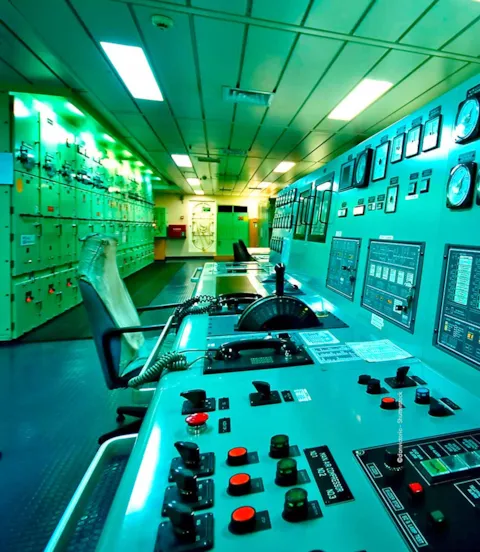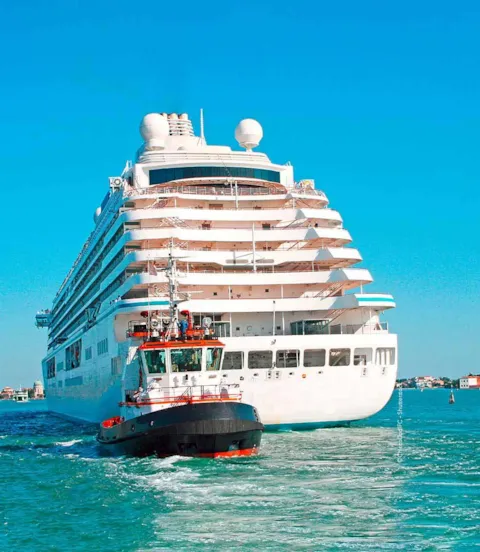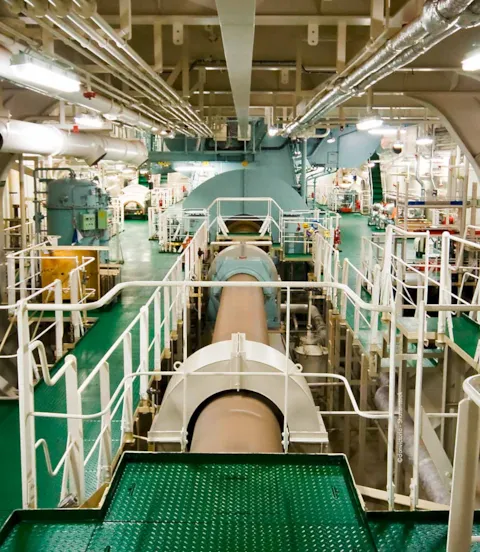Notations build trust
Ensuring safety at sea is one of the core responsibilities of a classification society. DNV GL offers new and updated class notations that can give owners peace of mind, whether regarding safety threats such as machine room fires or cybercrime or Safe Return to Port capabilities.
Lessons learned and feedback from surveyors have prompted DNV GL to update or newly develop several optional class notations to enhance safety at sea.

Cyber secure class notation
Whether in machinery, navigation or communication systems, programmable control systems are a longstanding and essential part of ships, but the increasing integration and connectivity of these systems represents an ever-larger target for cyber-security threats. As all programmable components are theoretically vulnerable to cyber security threats DNV GL has set out, with the new Cyber secure class notations, to offer owners and operators a framework to improve and demonstrate their cyber resilience.
The Cyber secure class notations has three different qualifiers: Basic, Advanced and +. Basic is primarily intended for ships in operation, while Advanced has been designed to be applied throughout the newbuilding process, with requirements for asset owners and operators, system integrators (e.g. yards), and equipment manufacturers. The Basic and Advanced qualifiers cover a number of essential systems, including propulsion, steering, navigation, and power generation. The third qualifier, +, is intended for systems that are not part of the default scope of Basic/Advanced. This gives owners and operators the flexibility to identify the threats, assess, and secure extra systems which are of particular importance to their operations.
The Cyber secure class notations build on DNV GL’s Recommended Practice (DNVGL-RP-0496) on cyber security and extends to the cyber security assessment of control system components type approval program DNVGL-CP-0231, with which makers can now demonstrate the security of their systems through an independent verification process.

Safe return to port class notation and class guideline
The Safe Return to Port regulations are intended to provide passenger vessels with enough robustness and redundancy to act as their own life boat in case of an on-board incident involving fire or flooding. The Safe Return to Port (SRtP) regulations from IMO and Solas, mandatory for new ships since July 2010, are another step towards making passenger ships safer. The consequences of the SRtP regulations for ship design, operation, maintenance and crew training are far-reaching and complex. Ensuring SRtP capability for passenger ships in damaged condition requires detailed design planning, especially regarding the redundant systems, piping, cabling, ducting and control.
DNV GL has implemented the SRtP scheme in a new class notation and provides supplementary guidance in a revised class guideline. Publication of both documents is planned for 1st July 2019 with entry into force 01 January 2020 and replace the SRtP part of the DNV GL Statutory Interpretations.
“The main objective of the new notation is to support all involved stakeholders in establishing a consistent and predictable framework for implementing SRtP in the newbuilding process,” explains Karl Hovden, Senior Principal Engineer Control Systems at DNV GL. The notation formalizes the interpretations and experience from a wide number of completed and ongoing SRtP projects DNV GL has been involved in. The described requirements, acceptance criteria and acceptable solutions are aligned with current practice and allow for equivalent solutions. This leads to reduced project uncertainty and increased transparency, improving the efficiency of the design and approval processes.
The SRtP regulations assume a “system approach” requiring close cooperation between the different players and technical disciplines. The class guideline includes general guidance and introduction to the different stakeholders of SRtP projects, addressing the work process and responsibilities. “It is of particular importance that all stakeholders, including the owner, get involved on key SRtP aspects in the early project phases to avoid costly design modification at a later stage,” explains Hovden. Background information, context and intentions of the key requirements provide guidance on a proposed structure and the content of the key documents as well as on the hydrodynamical calculations.

Fire safety notation F(M-P)
DNV GL has introduced a new class notation F(M-P), which focusses not only on the systems, but the processes and people to enhance the main safety barriers to prevent fires in machinery spaces.
The new notation (F (M-P), which will be first implemented in RCL’s new “Navigator of the Seas”, identifies key areas for preventing fires in engine rooms based on indecent analysis, feedback from surveyors, and best practices from the industry. It sets in place standards and processes focussing on the prevention of oil leakage, detection of oil leakage and shutdown system, containment oil leakage and prevention of ignition.
The new notation brings together many aspects of barrier management to improve safety. It covers not just the technical systems, but the processes used and the people involved, utilizing best practices to provide a holistic approach to preventing these incidents. This notation shows the importance of learning from casualty data, and how by combining this with the insights from class and the industry we can work together to move safety forward.
As casualty statistics indicate that many engine room fires occur when flammable liquid reaches a hot surface, the notation introduces process checks and technical measures to prevent this from occurring. There is overarching emphasis on both internal and external processes and procedures, with auditing of procedures to enable more efficient oversight. Likely areas for leakage are identified, and containment strategies for such areas offered. Control and monitoring of vibration in essential systems is an added requirement, with ongoing data collection included to show trends over time. Insulation of potentially hot surfaces is also a key issue to prevent ignition, so maintenance activities in this area is emphasized. In addition, the requirement for continuous improvement through data analytics means that owners and operators can gain ongoing benefits from the processes and systems they put in place to prevent fires.